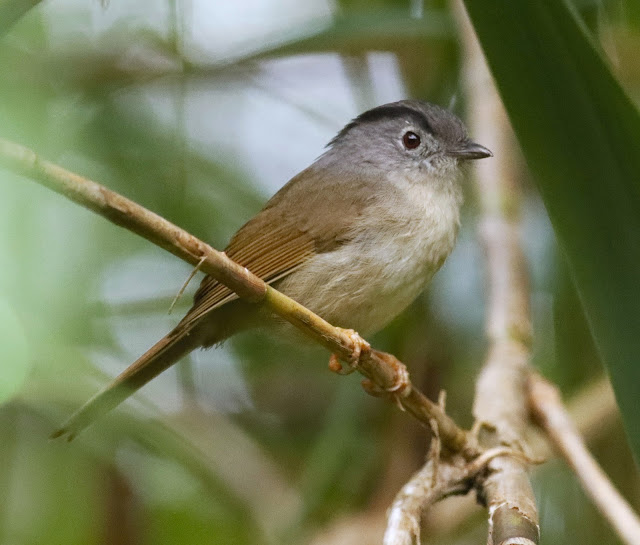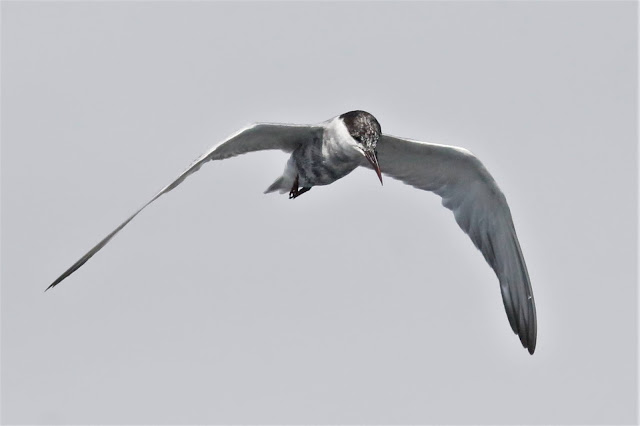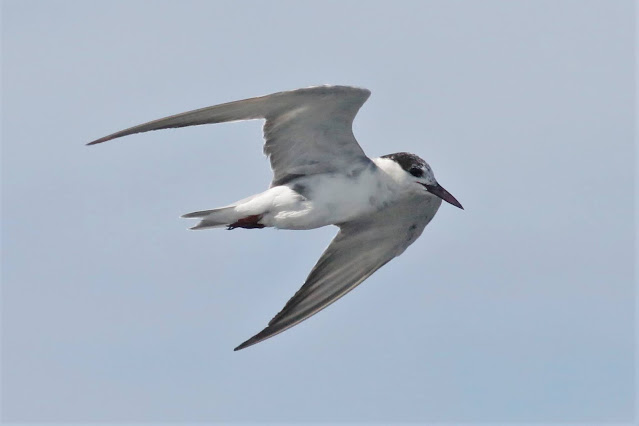Monday, 23 August 2021
Waders - the long distance migratory birds (Birds in Flight)
Sunday, 8 August 2021
Migrating Waders - the new arrivals - July 2021
Recently I have an opportunity to witness the first arrivals of migrating waders to our shoreline. Prior to my survey on 23 July 2021 at the mudflats of Kota Kuala Muda, the local folks informed that they have not seen any birds on the beach since two months ago. I have been lucky this time I think. The numbers were not many - i.e approx about 300 only. These numbers subsequently increased to about 900 + after a second survey conducted by Dr. Nur Munira on 27 July. More arrivals would be expected soon.
I think many people out there are still unsure of the meaning of waders/shorebirds. So here is my own interpretation of the definition.
The definition of wader
I believe the term wader can’t be described in one single sentence. Generally the term can be summarised as follows:
“Waders are a group of birds, commonly found wading along the shorelines or intertidal mudflats (at times inlands as well). During migration, they are often seen in dense flocks. Waders are closely RELATED* to skuas, gulls, terns and auks. (*note the word “related” which is not definitely and also these words – “shoreline”, “mudflats”, “migration” and “dense flocks”). The term "wader" is used in UK while "shorebird" is usually called in North America."
According to Oxford dictionary –
British term – a wading bird of the order Charadriiformes, which comprises the sandpipers, plovers and related birds
American term – a wading bird of the order Ciconiiformes, which comprises the herons, storks, and ibises.
Over here, we follow the British term.
Majority of them were Lesser Sand Plovers and Red-Necked Stints
Majority of them (RNS) are in these colors (winter plumage)
One of the best find - a Sanderling ! Reported to breed as far as the Arctic tundra region.
The next abundant waders were the Curlew Sandpipers.
Most of them were in their breeding plumage.
Two Great Knots were spotted among the Whimbrels and Common Redshanks.
This was one of a few Terek Sandpipers seen here.
There were pockets of Common Redshanks scattered here and there. The above photo was taken at almost noon time. Note the water level which have steadily increased. I have also realised that if it's a full moon you will most likely experienced the tides rising and receding at a faster rate (my personal observation).
The local folks informed that the last time they saw some waders were a flock of large waders which probably were these Whimbrels.
This was the only RNS with a partial breeding plumage.
A zorro-masked Lesser Sand Plover (LSP)
Another zorro-masked LSP
More Curlew SPs and a lone Whiskered Tern
Just wonder why there are some waders which have deeper red colors than the rest of other waders like for example the LSPs.
You can see the various plumage of LSPs here (above photo)
Another group of LSPs
The above wader was identified by Dave Bakewell as a Grey Plover / Black-bellied Plover. Another surprising find.
Lastly a single Gull-billed Tern (far left) was also spotted among the waders.
I have also came across this signage. Very good effort by the authorities but once awhile they will still need to test it to see whether it is functioning properly.
Here are some other birds seen nearby.
A cattle egret was seen foraging at a small patch of marshland.
Sunday, 11 April 2021
Terns of Peninsular Malaysia
The terns in this region are one of the most graceful sea birds you could watched. The ones which are highlighted here are the "Common Tern" (Sterna hirundo), "Whiskered Tern" (Chlidonias hybridus) and "White-winged Tern" (Chlidonias leucopterus). All photos were taken during my recent pelagic trip off the coast of Kuala Selangor.
Common Tern
An egg bearing female Common Tern perhaps
Another awesome photo of a Common Tern.
Whiskered Tern
Whiskered Tern can be found in abundance in the coastal regions. They are however also reported to have been seen more inland such as inland lakes, rivers and hillside.
At this time of the year, you can see semi or fully dressed summer plumage among the Whiskered Terns.
The above Whiskered Terns are still developing its summer plumage.
White-winged Tern
Birds, mammals & reptiles from the highlands to the coastline - August to November 2024
The tropical forest over here is like a huge emporium or maybe also like a jungle 'Toys"R"Us'. There are so many things to...

-
When i was young i used to be confused by the words rice and paddy. So for the benefits of those who are just as blur as me, here is an abst...
-
Sometimes you will find that some birds might resemble another bird species based on its photo images. One of those bird species which may...
-
Chickens have co-existed with human beings since the early age of human civilisation. From archaeological findings in Neolithic sites, it w...












































